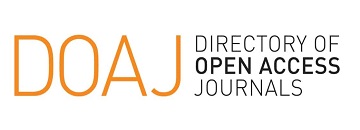Behavior and Group Movement of Proboscis Monkey’s (Nasalis larvatus Wurmb.Wurmb.) in Samboja, East Kalimantan

Downloads
Downloads
Alikodra, H.S., (1997). Populasi dan perilaku bekantan (Nasalis larvatus) di Samboja Koala, Kalimantan Timur. Media Koservasi, 5, pp.67–72.
Altmann, J., (1974). Observational study of behavior: sampling methods. Behaviour, 49(3/4), pp.227–267.
Atmoko, T., (2012a). Bekantan Kuala Samboja, Bertahan dalam keterbatasan: Melestarikan bekantan di habitat terisolasi dan tidak dilindungi. M. Bismark, ed., Bogor: Pusat Litbang Hutan dan Konservasi Hutan.
Atmoko, T., (2012b). Pemanfaatan ruang oleh bekantan (Nasalis larvatus Wurmb) pada habitat terisolasi di Kuala Samboja, Kalimantan Timur. Tesis: Bogor. Institut Pertanian Bogor.
Atmoko, T., A. Maruf, I. Syahbani, & M.T. Rengku, (2007). Kondisi habitat dan penyebaran bekantan (Nasalis larvatus Wurmb) di Delta Mahakam, Kalimantan Timur. In Seminar Pemanfaatan HHBK dan Konservasi Biodiversitas menuju Hutan Lestari. Balikpapan: Balai Penelitian Teknologi Konservasi Sumber Daya Alam, pp. 35–42.
Atmoko, T. A. Maruf, S.E. Rinaldi, & B.S.Sitepu, (2011). Penyebaran bekantan (Nasalis larvatus Wurmb.) di Teluk Balikpapan, Kalimantan Timur. In Prosiding Seminar Hasil-Hasil Penelitian BPTKSDA Samboja. Balikpapan, pp. 71–83.
Atmoko, T., Mardiastuti, A. & Iskandar, E., (2014a). Komunitas habitat bekantan (Nasalis larvatus Wurmb) pada areal terisolasi di Kulaa Samboja, Kalimantan Timur. Jurnal Penelitian Hutan dan Konservasi Alam, 11(2), pp.127–141.
Atmoko, T., Mardiastuti, A. & Iskandar, E., (2014b). Struktur kelompok dan penyebaran bekantan (Nasalis larvatus Wrumb.) di Kuala Samboja, Kalimantan Timur. In N. P. Oka et al., eds. Seminar Ilmiah Nasional Ekologi dan Konservasi – Makassar, 20-21 November 2013. Makassar: Fakultas Kehutanan Universitas Hasanuddin, Balai Taman Nasional Bantimurung Bulusaraung, Masagena Press, pp. 29–34.
Bernard, H. I. Matsuda, G. Hanya, & A.H. Ahmad., (2011). Effects of river width on the selection of sleeping-site by proboscis monkeys (Nasalis larvatus) in Sabah Malaysia. Journal of Tropical Biology and Conservation, 8, pp.9–12.
Bismark, M., (2009). Biologi Konservasi Bekantan (Nasalis larvatus), Bogor: Pusat Penelitian dan Pengembangan Hutan dan Konservasi Alam.
Bismark, M., (1994). Ekologi makan dan perilaku bekantan (Nasalis larvatus Wurmb) di Hutan Bakau TN Kutai Kalimantan Timur. Desertasi. Bogor: Institut Pertanian Bogor.
Boonratana, R., (2013). Fragmentation and its significance on the conservation of proboscis monkey (Nasalis larvatus) in the Lower Kinabatangan, Sabah (North Borneo). In L. K. Marsh & C. A. Chapman, eds. Primates in Fragments: Complexity and Resilience, Developments in Primatology: Progess and Prospects. New York: Springer Science, pp. 459–474.
Boonratana, R., (2000). Ranging behavior of proboscis monkeys (Nasalis larvatus) in the Lower Kinabatangan, northern Borneo. International Journal of Primatology, 21(3), pp.497–518.
Fam, S.D. & Nijman, V., (2011). Spizaetus hawk-eagles as predators of arboreal colobines. Primates, 52(2), pp.105–110.
Feilen, K.L. & Marshall, A.J., (2014). Sleeping site selection by proboscis monkeys (Nasalis larvatus) in West Kalimantan, Indonesia. American Journal of Primatology, 76(12), pp.1127–1139.
Kaltenbach, H.-M., (2012). A Concise Guide to Statistics, London, New York: Springer. Available at: http://www.springer.com/series/8921.
Kartono, A.P., Ginting, A. & Santoso, N., (2008). Karakteristik habitat dan wilayah jelajah bekantan di hutan mangrove desa Nipah Panjang, kecamatan Batu Ampar, kabupaten Kubu Raya provinsi Kalimantan Barat. Media Koservasi, 13(3), pp.1–6.
Matsuda, I., Akiyama, Y., Tuuga, A., Bernard, H., & Clauss, M., (2014). Daily feeding rhythm in proboscis monkeys: A preliminary comparison with other non-human primates. Primates, 55(2), pp.313–326.
Matsuda, I. Tuuga, A., Akiyama, Y. & Higashi, S., (2008). Selection of river crossing location and sleeping site by proboscis monkeys (Nasalis larvatus) in Sabah, Malaysia. American Journal of Primatology, 70(11), pp.1097–1101.
Matsuda, I., Tuuga, A. & Higashi, S., (2010). Effects of water level on sleeping-site selection and inter-group association in proboscis monkeys: why do they sleep alone inland on flooded days? Ecological Research, 25, p.475–482.
Matsuda, I., Tuuga, A. & Higashi, S., (2009). Ranging behavior of proboscis monkeys in a riverine forest with special reference to ranging in inland forest. International Journal of Primatology, 30(2), pp.313–325.
Meijaard, E., Nijman, V. & Supriatna, J., (2008). Nasalis larvatus. The IUCN Red List of Threatened Species 2008. Downloaded on 27 June 2016. www.iucnredlist.org.
Nekaris, K.A.I. & Munds, R., (2010). Using Facial Markings to Unmask Diversity: The Slow Lorises (Primates: Lorisidae: Nycticebus spp.) of Indonesia. In S. Gursky-Doyen & J. Supriatna, eds. Indonesian Primates. Springer Science, pp. 383–396.
Nijman, V., (2015). Forest (and) Primates, Conservation and ecology of the endemic primates of Java and Borneo, Tropenbos.
Sá, J.P.M. de, (2007). Applied Statistics Using SPSS, STATISTICA, MATLAB and R. 2nd ed., Berlin Heidelberg: Springer-Verlag.
Sha, J.C.M., Bernard, H. & Nathan, S., (2008). Status and conservation of proboscis monkeys (Nasalis larvatus) in Sabah, East Malaysia. Primate Conservation, 23(1), pp.107–120.
Soendjoto, M.A., (2005). Adaptasi bekantan (Nasalis larvatus) terhadap hutan karet Studi kasus di Kabupaten Tabalong Kalimantan Selatan. Institut Pertanian Bogor.
Stark, D., Nijman, V., Lhota, S., Robins, J.G. & Goossens, B., (2012). Modeling population viability of local proboscis monkey Nasalis larvatus populations: conservation implications. Endangered








